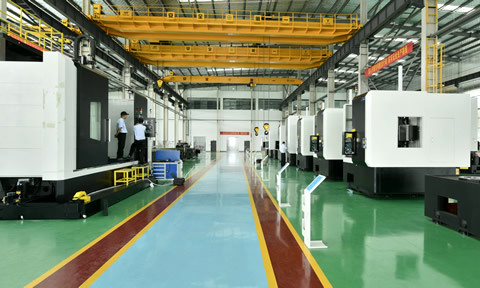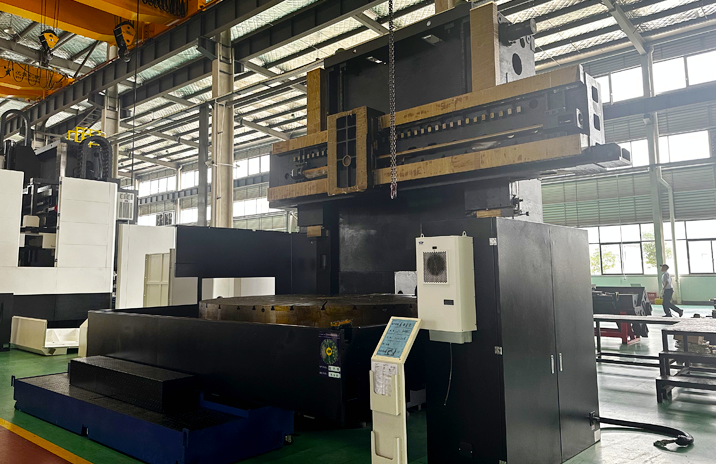Guide to Adjusting the Spindle Accuracy of a Turn-Mill Composite CNC Machine Tool
Release time:
2025-01-08
Before making adjustments to the spindle accuracy, the first step is to conduct a comprehensive accuracy check of the spindle. This includes, but is not limited to, measuring key parameters such as radial runout, axial movement, and end face runout. Additionally, to ensure consistency in accuracy at different positions of the spindle, it is necessary to check the runout at both the near end and the far end of the spindle. Only when these parameters meet the accuracy requirements of the machine tool can subsequent adjustment work be carried out.
The spindle precision adjustment of a turning-milling composite CNC machine tool is a complex and delicate process that relates to the overall performance and machining accuracy of the machine. Below is a comprehensive adjustment guide designed to help technicians effectively complete this task.
1. Preliminary Assessment of Spindle Precision
Before performing spindle precision adjustments, the first step is to conduct a comprehensive precision check of the spindle. This includes, but is not limited to, measuring key parameters such as radial runout, axial movement, and end face runout of the spindle. Additionally, to ensure consistency in precision at different positions, the runout at both the near and far ends of the spindle should also be checked. Only when these parameters meet the precision requirements of the machine tool can subsequent adjustment work be carried out.
2. Adjustment of Parallelism and Coaxiality between the Spindle and Sub-Spindle
Design and install adjustment plates: Based on the specific structure and precision requirements of the machine tool, design and manufacture suitable adjustment plates to provide necessary support and positioning during the adjustment process.
Loosen the spindle seat fastening screws: Before starting the adjustment, it is essential to carefully loosen the fastening screws of the spindle seat while maintaining the stability of the spindle, which can be achieved by tightening the fastening screws of the spindle diagonally on the adjustment plate.
Adjust the adjustment screws: Use the adjustment screws to adjust the parallelism between the spindle and the Z2 axis, as well as the coaxiality between the spindle and the sub-spindle. During this process, precision measuring tools such as dial indicators should be frequently used for real-time monitoring to ensure the accuracy of the adjustments.
Precision verification: After the adjustments are completed, use tools such as dial indicators again to measure the parallelism and coaxiality of the spindle to confirm that the adjustment results meet the precision standards of the machine tool.
3. Adjustment of the Axial Precision of the Turret Milling Axis
Milling axis precision detection: First, detect the precision of the turret milling axis, especially the parallelism between the milling axis and the X1 axis, which is key to ensuring machining accuracy.
Loosen the milling axis fastening screws: Before the adjustment, loosen the fastening screws of the milling axis to provide necessary flexibility for the adjustment operation.
Adjust the milling axis position: Change the position of the milling axis to meet the required parallelism by appropriate tapping or adjusting other related components. During this process, it is also necessary to use tools such as dial indicators for real-time monitoring.
Tighten the milling axis screws: After the adjustment is completed, tighten the screws of the milling axis to ensure its stability during the machining process.
4. Precautions During the Adjustment Process
Strictly adhere to precision standards: The precision requirements of the turning-milling composite CNC machine tool are extremely high, so it is essential to strictly follow the relevant precision standards and requirements throughout the adjustment process.
Use professional tools: To ensure the accuracy of the adjustments, it is necessary to use professional measuring tools, such as dial indicators, for measurement and verification.
Reasonable adjustment sequence: When performing precision adjustments, a reasonable adjustment sequence should be followed, usually taking one axis as the reference axis and gradually adjusting other axes to ensure the overall precision of the machine tool.
Emphasize safe operation: During the adjustment process, it is crucial to strictly follow safety operating procedures, especially when loosening or tightening screws, to ensure that the machine tool is in a stopped state to prevent accidents.
The spindle precision adjustment of a turning-milling composite CNC machine tool is a complex and delicate process that requires technicians to have rich experience and professional knowledge. By strictly adhering to precision standards, using professional tools, following a reasonable adjustment sequence, and emphasizing safe operation, the accuracy and reliability of the adjustment results can be ensured, thereby enhancing the overall performance and machining accuracy of the machine tool.


E-mail:meishenmeike@163.com
Zip Code: 215300
Add: No.18,Huangziliang Rd,Qutang Town, Hai'an City,Jiangsu
MEICO

Follow us










